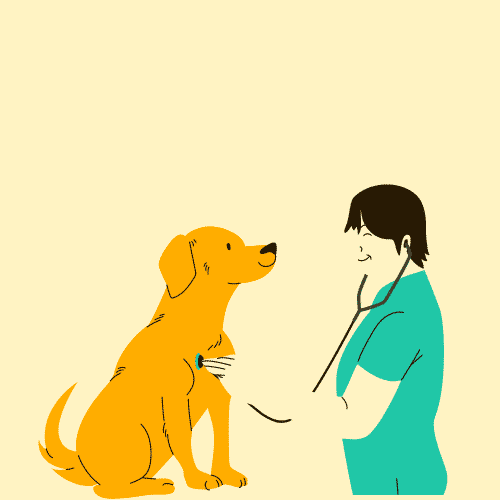The TCP was first developed in the 1910s. The trademark name is derived from the chemical term trichlorophenylmethyliodosalicyl, which was initially used to describe the substance. In mid 20th century, trichlorophenylmethyliodosalicyl was substituted as the active component by a combination of phenol and halogenated phenols. The liquid version of TCP is one of the most well-known brands of antiseptic in the United Kingdom and the United States, and its powerful medical odor may be recognized by many as a general antiseptic fragrance. So, TCP is a well-known and popular antiseptic brand for humans, but what if TCP antiseptic is used on pets? Is TCP ok for dogs?

Yes, TCP (trichlorophenylmethyliodosalicyl) is quite ok for dogs if it is diluted with 50 % water. It means that you can use TCP with water in 1:1 on any dog breed in case of skin injury/lesion.
How Does Tcp Work?
Usually, TCP works by soothing pain and fighting infection. It is considered one of the best antiseptics that is used to cure sore throats, cuts/abrases, mouth ulcers, grazes, stings, bites, and spots in humans. But in dogs, it only works for skin cuts, lesions, or wounds.
How Do You Treat an Infected Wound on a Dog With Tcp?
Accidents do happen from time to time. Consequently, using TCP learning how to disinfect and treat your dog’s minor scratches or cuts at home is essential as a pet parent. In addition, you should be able to detect when veterinarian assistance is required.

TCP can be used to treat wounds in the following manner:
- As a rule, if the dog is small, it should be placed on a table or confronted in front of you. When dealing with large dogs, get down on the floor with them.
- Allow a second person to control the pet gently and, if necessary, use a muzzle on the animal.
- Clip the hair surrounding the affected region.
- Apply a thin layer of lukewarm water to the wound and the surrounding region. This reduces contamination and makes removing shaved fur/hair from the area is simpler.
- Shave the hair surrounding the wound with electric clippers to prevent infection. If you are extremely cautious to avoid harming the skin, you can use scissors or a disposable blade to cut the hair.
- Remove the water and hair from the water’s surface using a clean, dried cloth/paper towel.
- Apply a TCP solution (50% water and 50% TCP) to the area. It is one of the best ways to use TCP as an antiseptic in canines
- During the first 10-15 minutes, keep your dog from licking or rubbing the TCP solution; the longer you can keep him away, the better. A light, the loose bandage can be placed over the area to avoid licking, but it will need to be checked on on a regular basis and replaced as necessary.
- TCP solution should be applied to the wound 2 to 3 times each day.
If the wound worsens at any point throughout the healing process or does not heal within a week, contact your veterinarian.
When Should You Take Your Dog to the Veterinary Clinic?
Veterinary care should be sought for the following sorts of injuries rather than being performed at home:
- An injury in which pus is evident or the flesh around your dog’s wound is red and swollen
- Any damage that affects a substantial section of the body and is difficult to manage alone
- Any injury that causes the skin to be peeled entirely away (during deep laceration, for example, due to bite injury)

Even minor wounds should be treated as soon as possible to avoid the spread of infection and the development of scarring. The illness can spread if you leave it untreated for an extended period of time, and your veterinarian will most likely need to prescribe medications to keep the infection from spreading further.
If you have any questions about the seriousness of your pet’s injuries, it’s best to be on the safe side and book an appointment with your veterinary physician immediately. In addition, you should only use the TCP solution at home if you are convinced that your dog will not respond strongly to the treatment.
Is it ok to use human antiseptics on pets?
Yes, you may use some of the human antiseptics on pets, such as TCP, only in emergency conditions (when you do not have a pet’s antiseptic). But remember to dilute them for better results. If you suspect that something is amiss, consult with your veterinarian. Usually, it is not good to apply antiseptic made for humans on a pet’s wounds (since pets have a tendency to lick or consume it).
Can Antiseptics Be Harmful to Dogs?
Yes, using potent antiseptics (such as Savlon or Dettol) directly on the dog’s skin without dilution is strictly prohibited! Most vets believe that they are far too severe for canine skin if applied directly. Additionally, dogs should never be given human drugs such as paracetamol, aspirin, ibuprofen, anti-depressants, or sedatives unless they have received appropriate veterinarian guidance. If you’re not sure what to do, don’t do anything.
Can You Use Rubbing Alcohol or Hydrogen Peroxide on Your Dog’s Skin Wound?
If your canine companion has an open wound, never clean it with rubbing alcohol or hydrogen peroxide unless you have been expressly told to do so by your veterinarian. Both these products are toxic if consumed internally, and they have the potential to cause recovery to be delayed.
For Dogs, What Antimicrobial Cream Should Be Applied to Skin Cuts?
In the case of minor cuts and scrapes, Neosporin is appropriate for use on your dog. It can assist in preventing bacterial infections while also preventing your dog from irritating the wound site by itching, licking, or biting it while it heals.
What Tools Do You Need for Canine Wound Treatment?
It would help if you had the following tools to treat canine wounds in an emergency:
- Electric clippers
- Scissors/Disposable Razors
- Lukewarm water
- Clean, dry cloth/paper towels
- TCP solution (50% water and 50% TCP))
- Antimicrobial ointment
Can You Use Tcp on Dogs Ears?
There is no definitive answer to this question since every dog is different. However, in most cases, it is probably safe to use TCP on a dog’s ears. This is because TCP is a gentle and non-toxic cleaner that is unlikely to cause any harm to a dog’s delicate ears. If you are unsure whether or not TCP is, it is always best to consult with a veterinarian before using any type of cleaner or medication on your pet.
Can you use e45 cream on dogs?
Thanks for reading, if you enjoyed this article or found it useful please feel free to read some more!

Veterinarian (DVM, MS) Content Writer, Blogger, and WordPress Developer. Working as a pet/animal/bird/fish/reptile/wildlife writer for the past 7 years on many renowned platforms.




